当前位置:网站首页>(4) Data visualization of R language -- matrix chart, histogram, pie chart, scatter chart, linear regression and strip chart
(4) Data visualization of R language -- matrix chart, histogram, pie chart, scatter chart, linear regression and strip chart
2022-07-06 12:21:00 【EricFrenzy】
notes : This blog aims to share personal learning experience , Please forgive me for any irregularities !
Catalog
Histogram Rectangle
In statistics , Rectangular graphs are often used to show a continuous variable ( Such as length 、 Weight and other measured values ) The distribution of . stay R In language, rectangular graph is constructed with hist() function , See the following example for details :
#hist() The first parameter of the function is data , It's used here sampleData The column title in the list is length The data of
#main Is the title of the diagram ;xlab yes x Axis title ;ylab yes y Axis title
#freq yes TRUE What I draw is frequency , yes FALSE What I draw is probability density
#breaks Determine the number of rectangles . there 20 There will be 20 A rectangle
#xlim and ylim Determine the scope of the drawing
hist(sampleData$length, main = "Histogram of Protein Lengths",
xlab = "Length (AA)", ylab = "Frequency", freq = TRUE,breaks = 20,
xlim = c(0,10000), ylim = c(0,7000))
The following figure shows the effect drawn :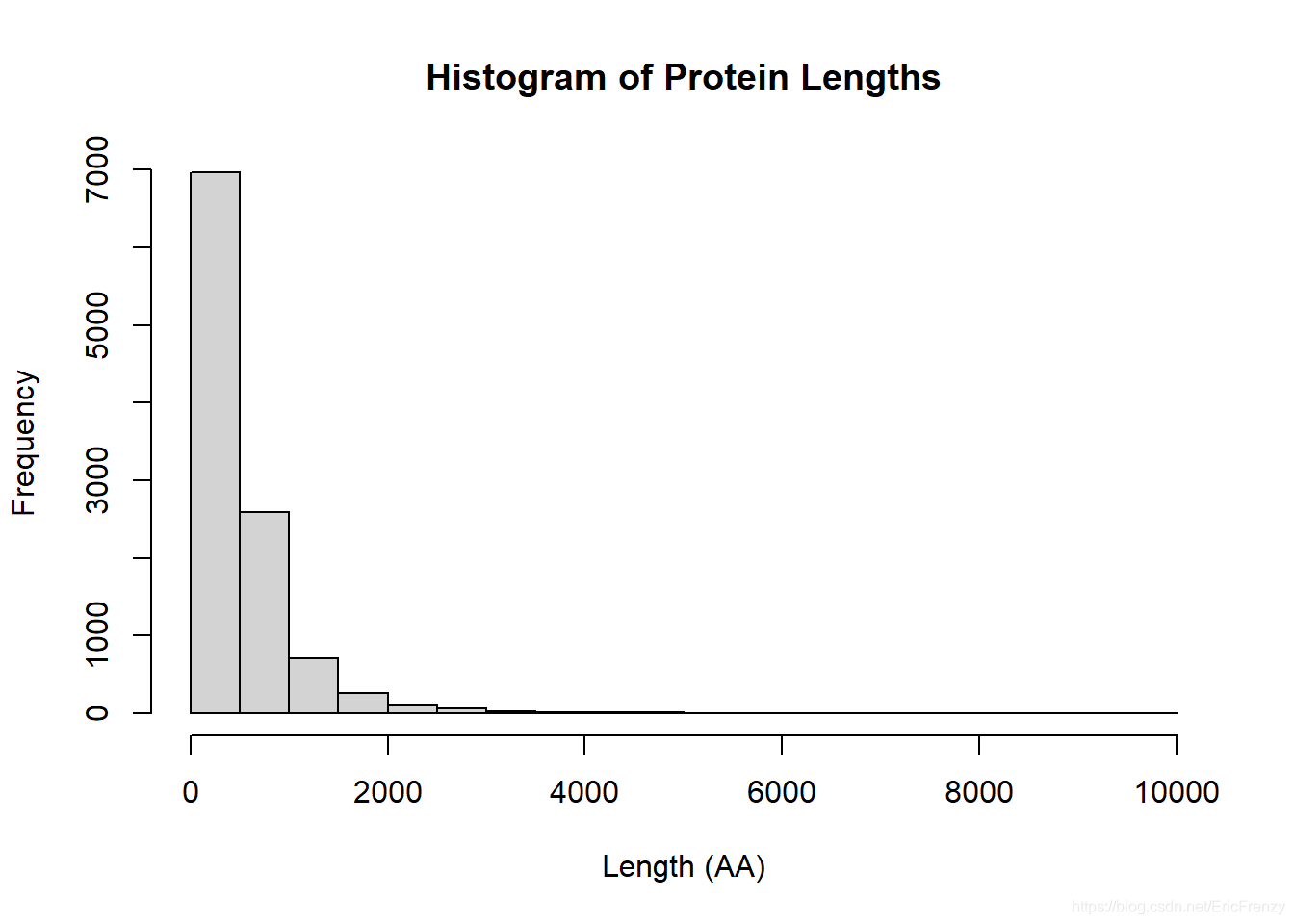
In this picture , We can find most protein length All in 2000 following , It is a very obvious positive skewness distribution .
Bar plot Histogram
Histogram is often used in statistics to show discontinuous variables ( Such as number 、 Count and measure money ) The distribution of . stay R The construction of histograms in language uses barplot() function , See the following example for details :
#barplot() The first parameter of is also the data used . Here is education The column title in the list is spending The data of
#names.arg It is equivalent to x value . This vector Corresponding to each year spending
#ylab yes y Axis title ;main Is the title of the diagram ;ylim yes y The scope of the shaft
#width Adjust the width of each column ;space Adjust the distance between columns
barplot(education$spending,
names.arg = education$year,
ylab = "Spending per student($)",
main = "Education Spending per Student",
ylim=c(0,7000))
The following figure shows the effect drawn :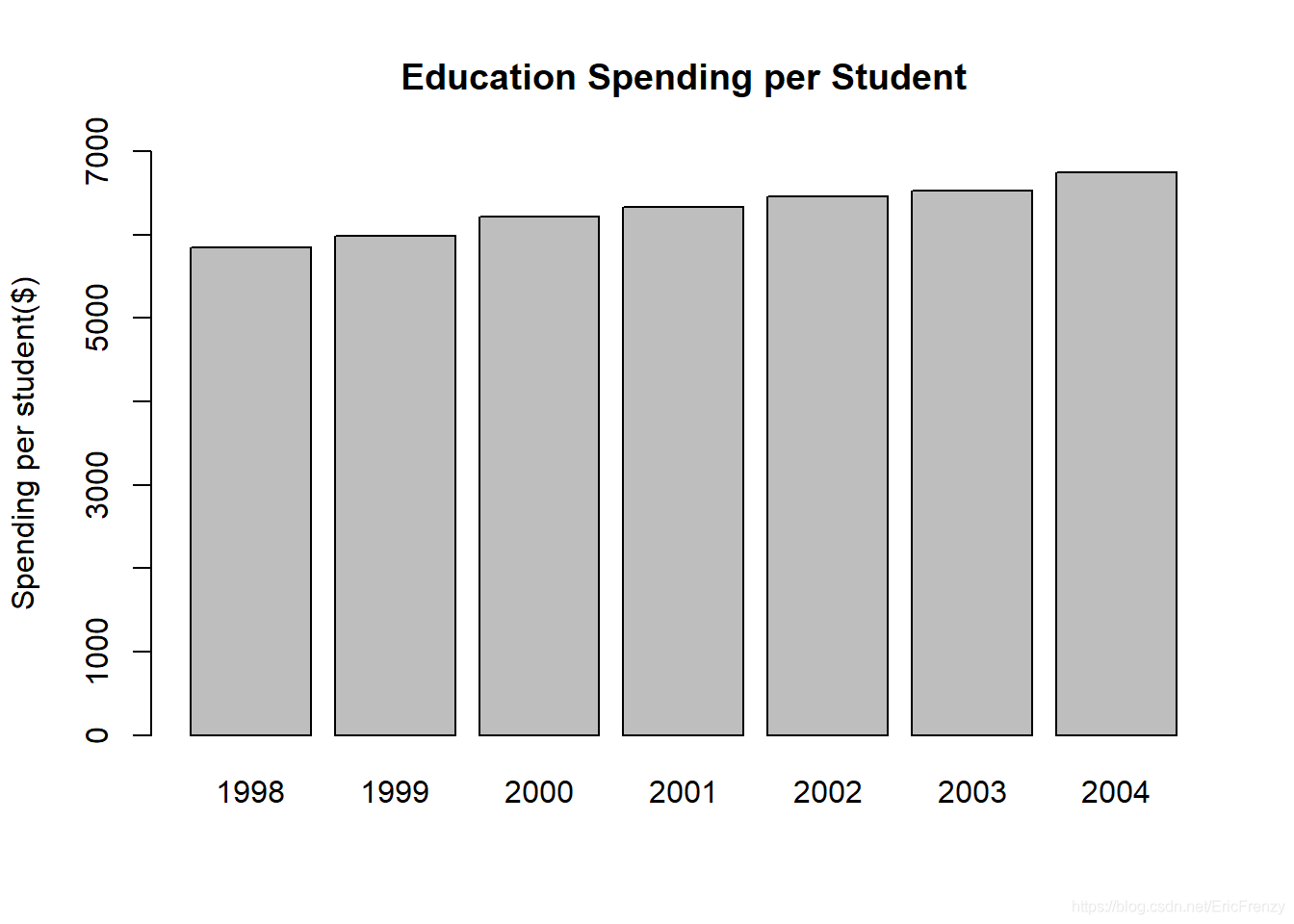
Visible in the sample data , The average number of students in education is increasing year by year .
Pie chart The pie chart
Pie chart can intuitively show the proportion of different kinds of data .R Language comes with pie() Function function is not very powerful . stay R See the following example for constructing pie charts in language :
#pie() The first parameter of is data , It can be the percentage of various classes in the total , It can also be the quantity of various kinds
#labels Is the data marked outside each sector , The format is vector
#main Is the title of the diagram
#col Adjust the color of each sector .rainbow() yes R Built in functions , It can divide rainbow colors into a specified number
#clockwise Adjust whether the drawing is clockwise or counterclockwise ;init.angle Adjust where the fan starts to draw
percentage <- c(36, 8, 17, 52)
desserts <- c("Ice cream", "Cookie", "Brownie", "Cake")
pie(percentage, labels = desserts,
main = "Dessert Preference",
col = rainbow(length(percentage)),
clockwise = FALSE, init.angle = 0)
The following figure shows the effect drawn :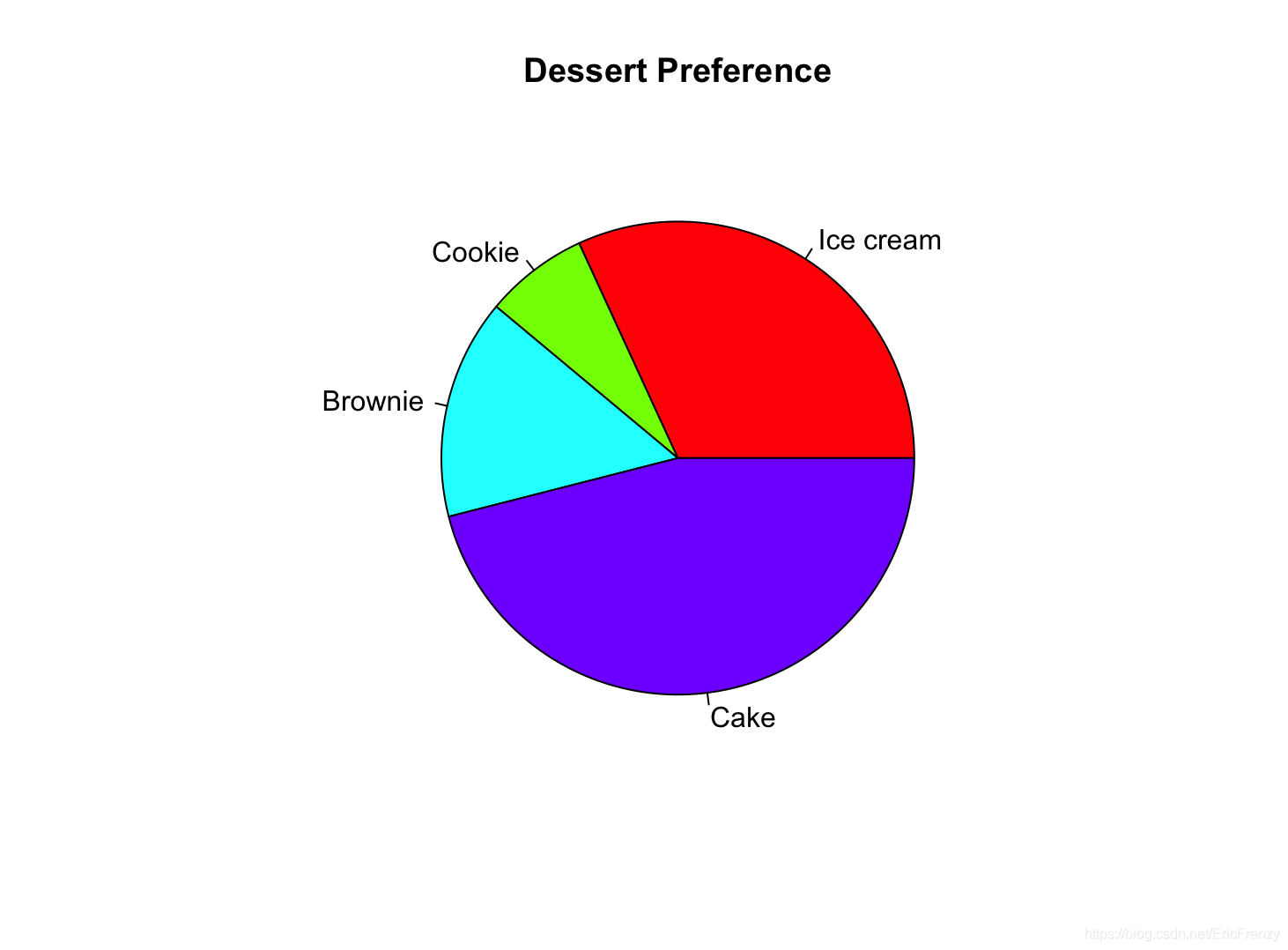
Dot plot Scatter plot
Scatter charts are often used in scientific experiments , Further analysis is carried out on the basis of visualizing independent variables and dependent variables . stay R In language, it is used to construct scatter diagram plot() function , See the following example for details :
a <- c(12, 17, 25, 33, 39, 45) # The independent variables (x)
b <- c(10, 13, 17, 20, 26, 31) # The dependent variable (y)
#plot() The first parameter of is the argument (x value ) data , The second parameter is the dependent variable (y value ) data
#main Set the title of the diagram ;xlab and ylab Set the title of the horizontal and vertical coordinates
plot(a, b, main="My Plot", xlab="x variable", ylab="y variable")
#lm(Y~X) Will generate a linear regression data , Including intercept and slope of regression function
#abline() This regression line will be drawn on the map ;col Set the color of the line
#summary() Will generate details about the regression line
abline(lm(b~a), col="red")
summary(lm(b~a))
The following figure shows the effect drawn :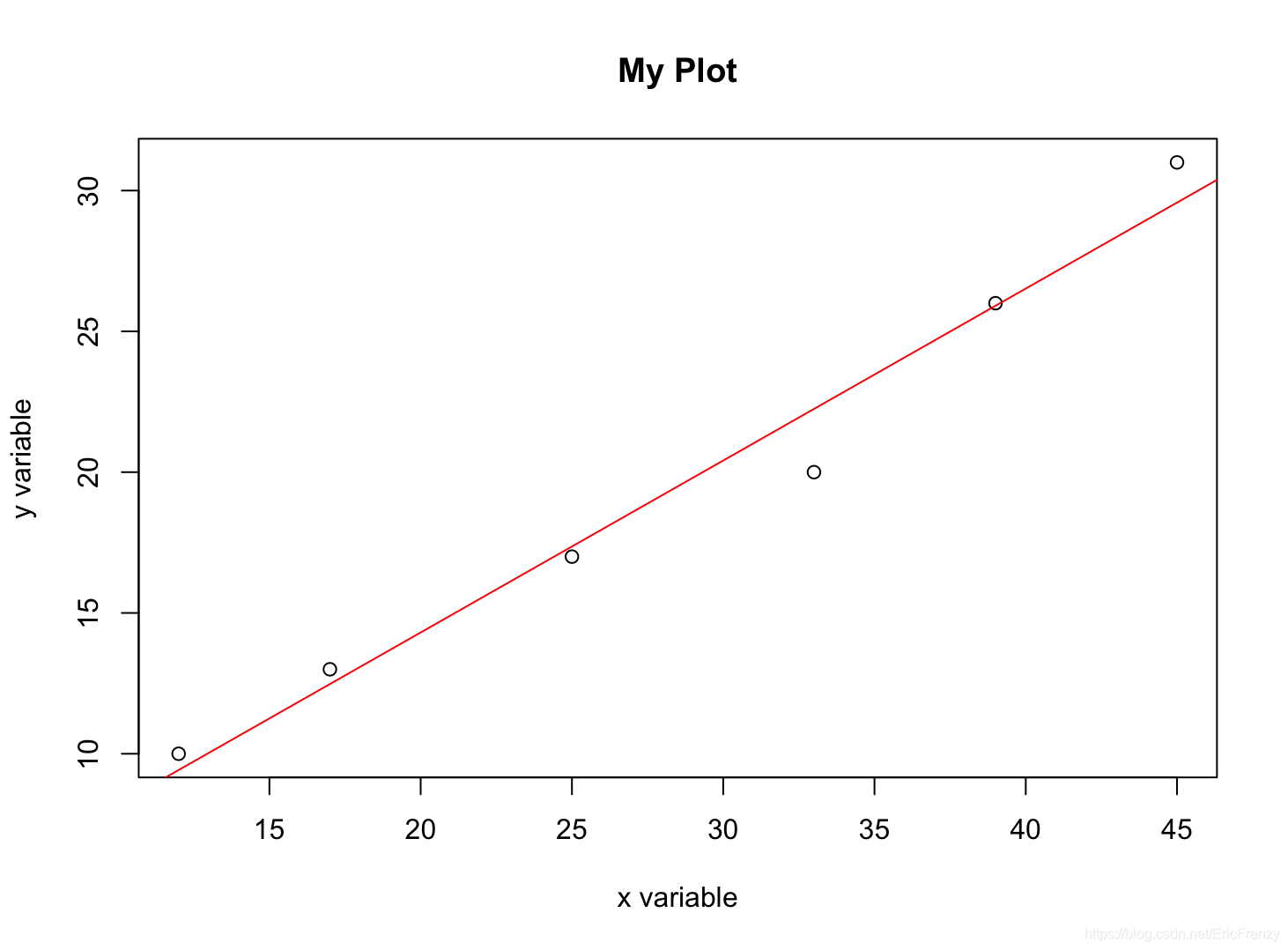
The following figure for summary() stay Console Output result :
In the picture Estimate Below is the intercept of the regression line (2.09396) And the slope (0.61074).Multiple R-squared It's what we often use R Square value (0.975).
Box-and-whisker plot Box chart
The box chart can well show the distribution of data .R It is used to construct box graph in language boxplot() function , See the following example for details :
# The first few items of Fibonacci series are selected for the data
#boxplot() The first parameter of is data ;horizontal Whether the control chart is drawn horizontally
# It can also be used. main Set the title and xlab Set the horizontal axis title
data <- c(1, 1, 2, 3, 5, 8, 13, 21, 34)
boxplot(data, horizontal=TRUE)
The following figure shows the effect drawn :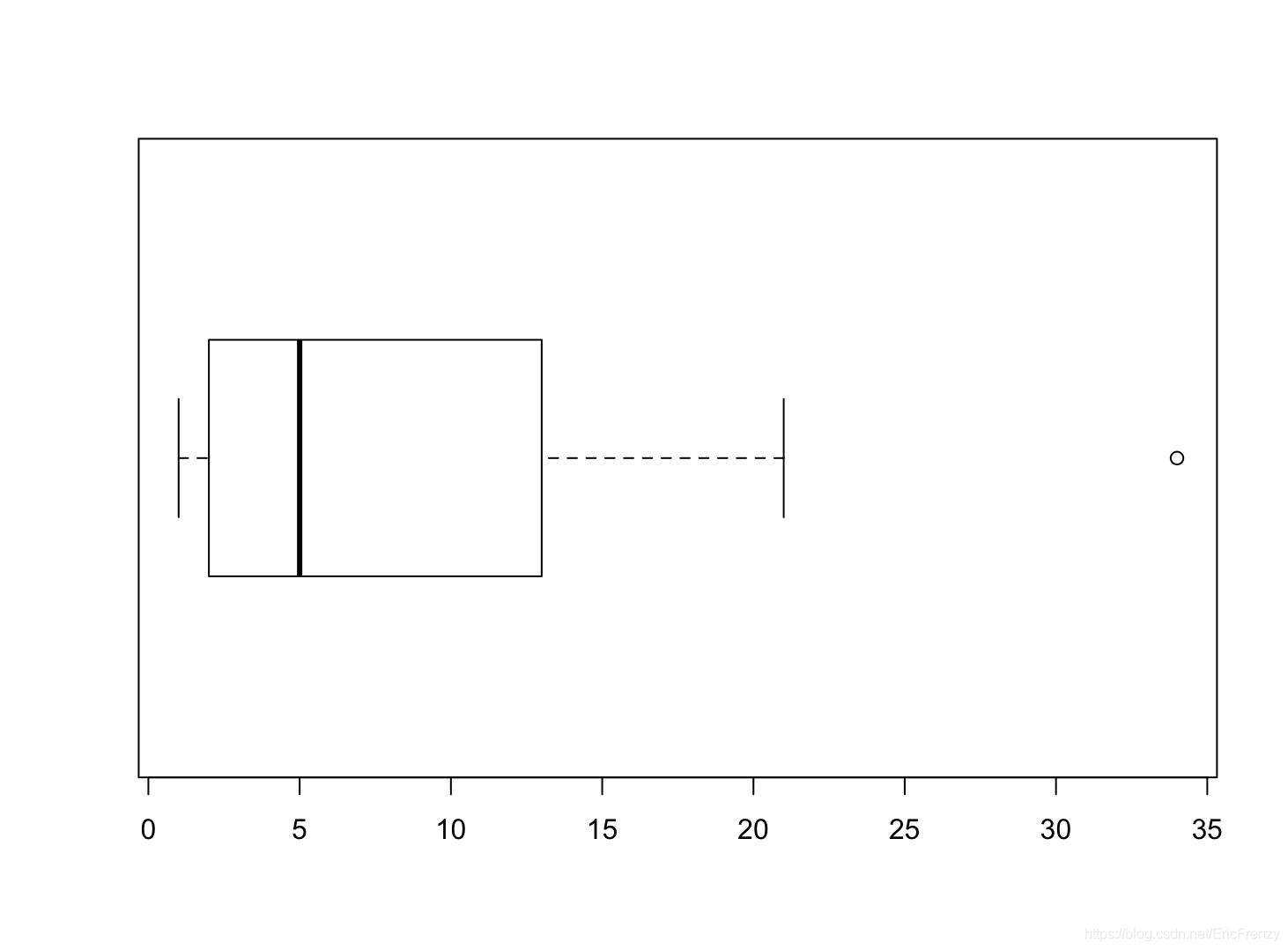
Look at the vertical line in the picture from left to right , We can see the lower edge of the data 、 Lower quartile 、 Median 、 Upper quartile 、 The upper edge , And circles represent outliers . It can be seen that this group of data has a positive skew distribution 、 It has characteristics such as outliers .
Strip chart Strip chart
A strip chart is similar to a one-dimensional scatter chart , The function is close to the box diagram , It can visually display the distribution of data under a small amount of data .R In language, banded graphs are constructed with stripchart() function , See the following example for details :
#stripchart() The first parameter of the function is data
#method Control the coincidence of data points ."jitter" To avoid overlapping ,"stack" To display points with the same value side by side , default "overplot" All the data generated is on a straight line ,
# If method="jitter",jitter Adjust the degree of dispersion of data points to avoid coincidence
# If method="stack",offset The interval between points with the same parameter adjustment value
# It can also be used main Set chart title ,xlab Set the horizontal axis title
data <- c(1, 1, 2, 3, 5, 8, 13, 21, 34)
par(mfrow=c(1, 2)) # Set two pictures to display side by side , The format here is 1 That's ok 2 Column
stripchart(data, method = "jitter", jitter=1)
stripchart(data, method = "stack", offset=1)
The following figure shows the effect drawn :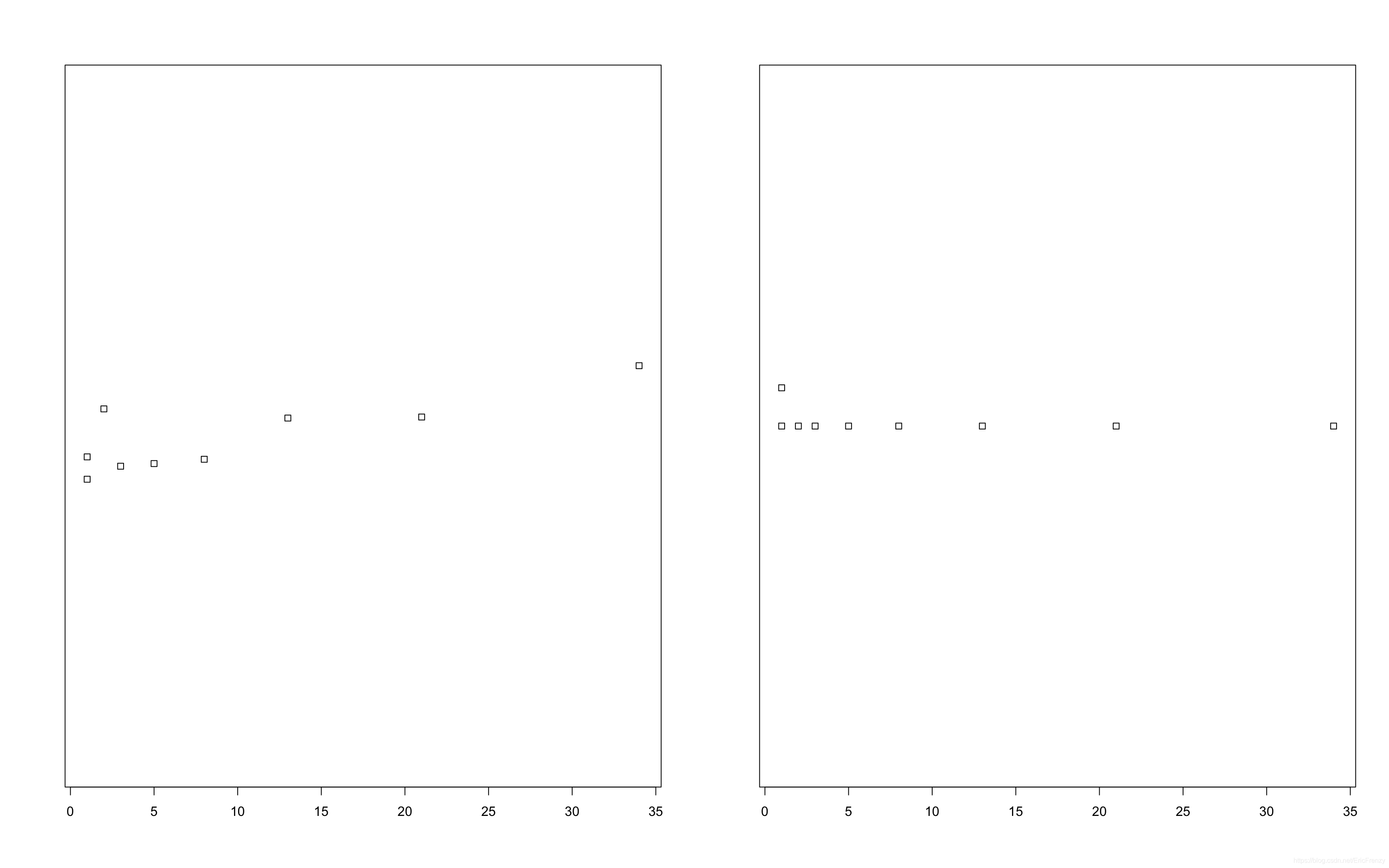
It can be seen that , Most of the data is more compact on the left , The more to the right, the more scattered .
Conclusion
Introduced so many uses R Language is a way to visualize data , The most important thing to do data analysis is to choose a graph suitable for data type and analysis purpose . If you have any questions or ideas, please leave messages and comments !
边栏推荐
- Minio文件下载问题——inputstream:closed
- [offer9]用两个栈实现队列
- History object
- Variable parameter principle of C language function: VA_ start、va_ Arg and VA_ end
- Fashion Gen: the general fashion dataset and challenge paper interpretation & dataset introduction
- C language, log print file name, function name, line number, date and time
- [esp32 learning-1] construction of Arduino esp32 development environment
- JS正则表达式基础知识学习
- Générateur d'identification distribué basé sur redis
- Talking about the startup of Oracle Database
猜你喜欢
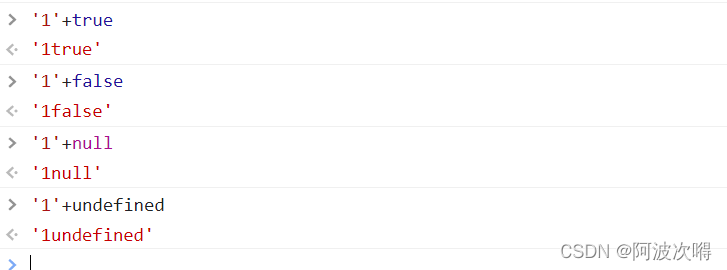
JS變量類型以及常用類型轉換
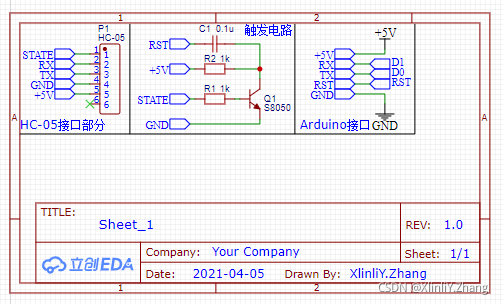
Single chip Bluetooth wireless burning

ES6 grammar summary -- Part 2 (advanced part es6~es11)

JS regular expression basic knowledge learning

RT thread API reference manual

【ESP32学习-1】Arduino ESP32开发环境搭建

JS Title: input array, exchange the largest with the first element, exchange the smallest with the last element, and output array.

编译原理:源程序的预处理及词法分析程序的设计与实现(含代码)

Fashion Gen: the general fashion dataset and challenge paper interpretation & dataset introduction
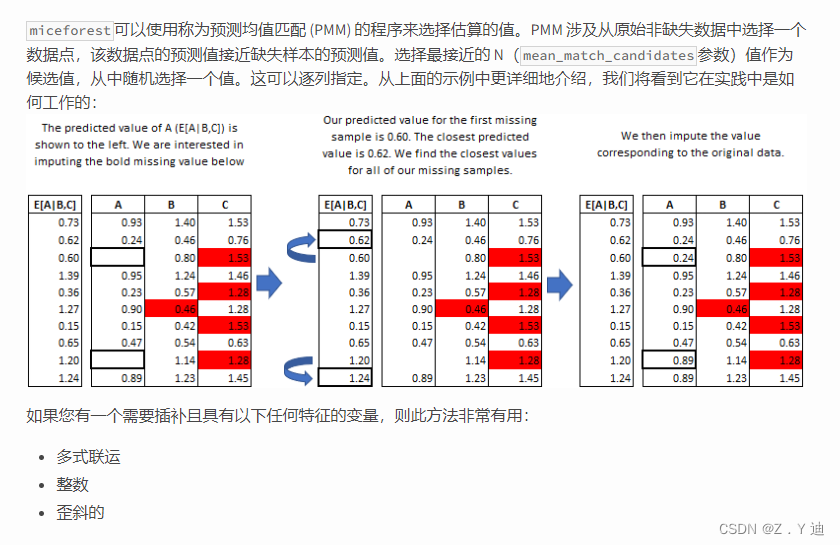
Missing value filling in data analysis (focus on multiple interpolation method, miseforest)
随机推荐
Embedded startup process
Knowledge summary of request
Walk into WPF's drawing Bing Dwen Dwen
[esp32 learning-2] esp32 address mapping
基於Redis的分布式ID生成器
Bubble sort [C language]
关于Gateway中使用@Controller的问题
Gateway 根据服务名路由失败,报错 Service Unavailable, status=503
[offer9]用两个栈实现队列
Générateur d'identification distribué basé sur redis
Detailed explanation of Union [C language]
(三)R语言的生物信息学入门——Function, data.frame, 简单DNA读取与分析
Mysqldump error1066 error solution
The dolphin scheduler remotely executes shell scripts through the expect command
JS正则表达式基础知识学习
Analysis of charging architecture of glory magic 3pro
Page performance optimization of video scene
1081 rational sum (20 points) points add up to total points
Priority inversion and deadlock
Symbolic representation of functions in deep learning papers